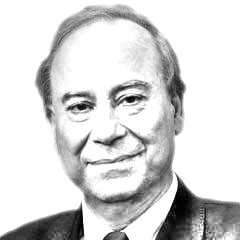It is a marvel of the globalised world we live in, that there is a major cultural festival in the Caribbean named after a Muslim hero, who lived and died oceans and continents away and many centuries ago. It is called Hosay, and derives its name from Hazrat Imam Husain, the beloved and noble grandson of Islam’s Holy Prophet (PBUH). The festival honours Hazrat Husain and his family’s martyrdom inmodern day Iraq as a heroic stand for justice against tyranny. In Trinidad, Hosay is celebrated by Muslims and non-Muslims alike.
In Islam and the Americas, a book by the anthropologist Aisha Khan of New York University, this is only one of the many things you learn. The book is a collection of articles, each examining a different facet of Islam, predominately in the Caribbean and Central and South America. There are one and a half million Muslims in Latin America—one million of whom are Sunnis. As the book demonstrates, they have made a substantial impact on the countries they are a part of, despite their small numbers.
Unbeknownst to many, Islam has a long history in Latin America. Khan writes that Muslims began coming to the New World on Spanish and Portuguese ships in the fifteenth and sixteenth centuries, which were probably manned by Muslims from Andalusia.
Then came the populations of Muslims from West Africa, who were captured and forced to work as slaves. Khan gives the example of Boukman of Haiti, who launched the only successful slave rebellion in history, the Haitian Revolution of 1791, which resulted in the formation of an independent state. His name, she writes, is an approximation of “Book Man”, given for his ownership of the Holy Quran.
There are also sizable numbers of Muslims of African descent in Latin America today who rediscovered Islam in the twentieth century, as well as even more recent converts to Islam such as the indigenous Maya in Mexico
Another author in the volume, Rhoda Reddock, noted the existence of a community of former slaves in the Port of Spain, Trinidad. The community was led by the religious leader Jonas Mohammed Bath, who arrived in 1804-05 in Trinidad, bought his freedom, and his community “pooled its resources to purchase the freedom of other enslaved” Africans.This community, “through self-help activities; engaged in trade, money lending, and agricultural production… Apparently they also retained their African identity and Muslim names, and some members were able to find their way back to Africa on their own.”
In her article, Jerusha Ali writes that in the nineteenth century, following the 1835 Malê slave rebellion in Brazil, “police found amulets containing written suras (chapters) from the Quran, papers containing the opening verses of the Quran used in prayer” as well as “evidence of private religious schools or jama’a.” The Brazilian authorities, who were fearful of the Muslim community, “gave slave masters six months to baptise their slaves into Christianity and provide them with a basic religious education.”
After slavery was abolished in the nineteenth century, Muslims were recruited from areas such as India and Indonesia to work on plantations. In Suriname, Javanese from Indonesia arrived, and in Trinidad, South Asians, both Muslim and Hindu. Patricia Mohammed in her article discusses relations between Hindus and Muslims in Trinidad and detects “a very divergent yet tolerant Hindu and Islamic aesthetic that remains in Trinidad to this day” originating from the Mughals, who “fostered a sophisticated civilisation based on religious toleration.” The Muslims of the Caribbean retained their links with South Asia. For example, in 1947 the Jinnah Memorial Masjid in St. Joseph, Trinidad and Tobago, was founded.
There are also sizable numbers of Muslims of African descent in Latin America today who rediscovered Islam in the twentieth century, as well as even more recent converts to Islam such as the indigenous Maya in Chiapas, Mexico, which are discussed by Sandra Cañas Cuevas in her article. The Maya community, which is often discriminated against, saw some members converted by Spanish converts to Islam and, Cuevas writes, “Maya Muslims often make reference to the life of persecution lived by the Prophet, comparing his life with their own experience.”
The post-9/11 world has brought great challenges for Muslims throughout the Americas. General John Kelly, prior to joining President Donald Trump’s administration, claimed that 100-150 Muslims annually departed to join ISIS in Syria from Latin America and the Caribbean; a claim that Aisha Khan has refuted. In Jerusha Ali’s article, the readers are introduced to Muslim women in Brazil and the Bahamas, who are either converts themselves, or from convert families, who spoke of the negative image of Islam in the media and society, inspired by global stereotypes, and how this makes life difficult for them.
Ali describes a common public perception that “Muslims cannot simply be Brazilian or Bahamian.” A Brazilian-Muslim woman who wears the niqab told Ali of non-Muslim Brazilians, “They may call you anything or even assault you.” A 28-year-old woman in the Bahamas told Ali, “This country has rejected me at every turn.”
Yet Ali writes that the Muslim women are determined; none of the women she spoke with “chose to or were pressured to uncover or to modify their religious practices because of growing discrimination.”
It is clear from the tantalising details in this book that more research into the fascinating and significant Muslim population in the Caribbean and Central and South America — a community that is too often eclipsed by the Muslims of the United States and Canada — is sorely needed.
Muslims live under a cloud of suspicion and prejudice all over the globe, more is required from their leaders and intellectuals to find compassionate, and practical answers to their collective plight.
Akbar Ahmed is the Ibn Khaldun Chair of Islamic Studies at American University, Washington, DC, and author of Journey into Europe: Islam, Immigration, and Identity (Brookings Press, 2018)
Published in Daily Times, April 7th 2018.
